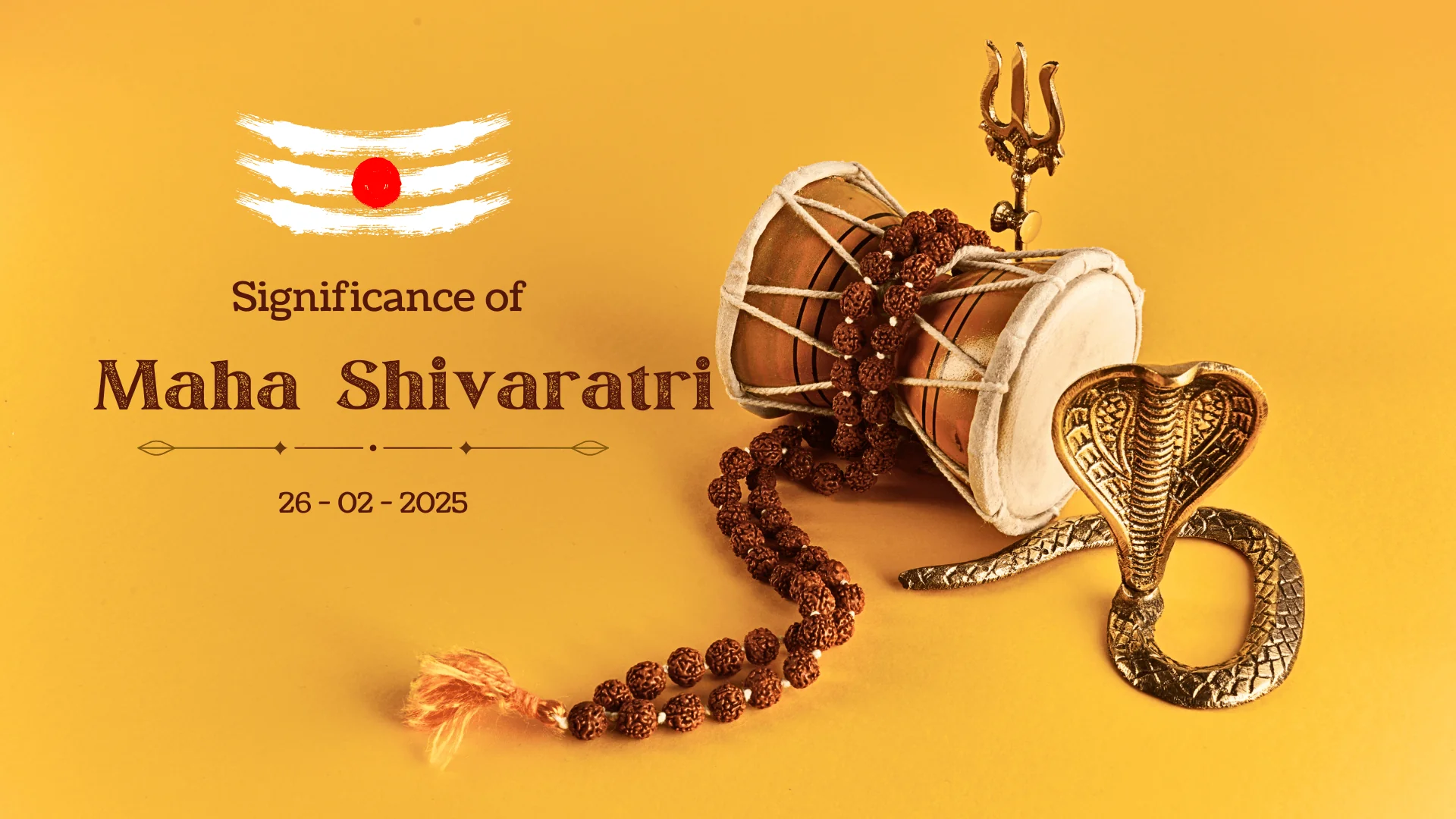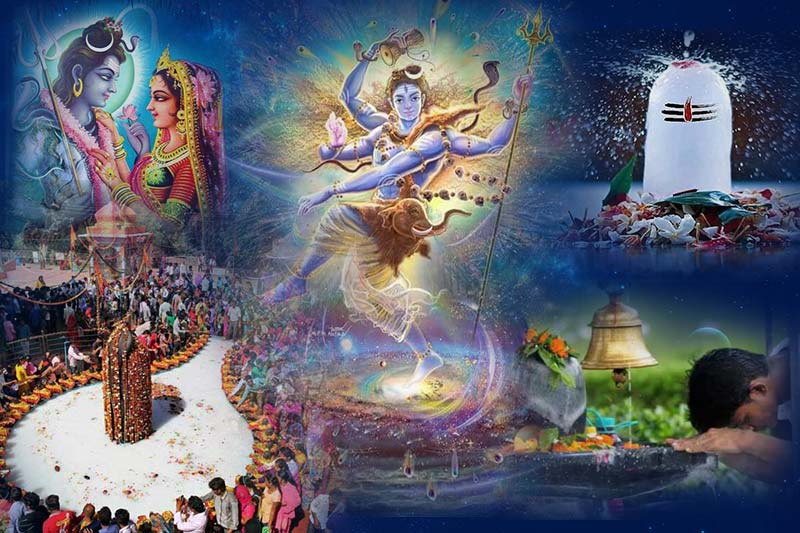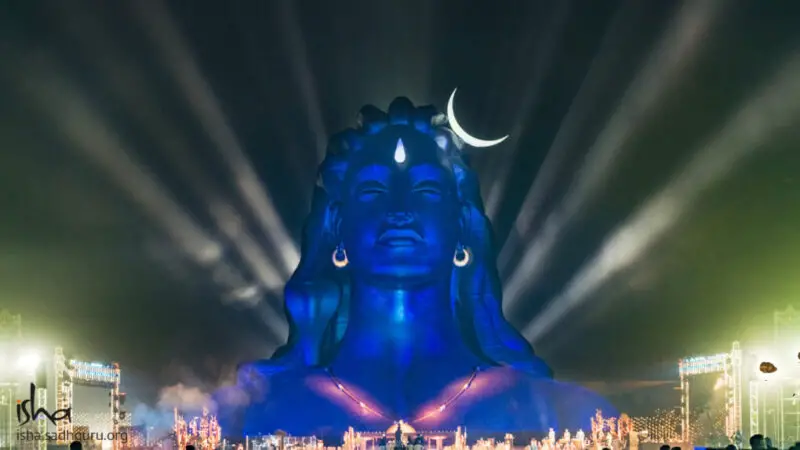Significance of Maha Shivratri 2025:

Maha Shivaratri is on 26th February ,is among the most important Hindu festivals in honor of Lord Shiva. He is considered one of the destroyers and transformers within the Hindu trinity. A term used to describe Maha Shivaratri literally comes from a Sanskrit term meaning “the Great Night of Shiva.”It is said that on the favorable night, Lord Shiva enacted the Tandava that is the cosmic dance of creation and destruction. It symbolizes the union between Shiva and Goddess Parvati.Isha Maha Shivratri foundation 2025 has many events on this special occasion.
Devotees observe Maha Shivaratri for the growth of spirituality, health, and well-being through blessings from Lord Shiva. It is regarded as one of the most important days to introspect and get motivated by meditation and inner connection.
Sadhana to be done at Home during Mahashivratri
1. Vrata/Fasting
Fasting on the day of Mahashivratri is an important spiritual sacrifice performed to worship Lord Shiva.People perform Nirjala, which is a complete fast with food and water, or Phalahar, which consists of fruits, milk, and vrat-specific food items. The fast includes prayer with bael leaves, flowers, and water, chanting the mantra “Om Namah Shivaya,” and meditation. Tamasik foods such as onion, garlic, and meat are not included in the diet. The fast is broken the next morning after rituals. It is considered to purify the body and mind, deepen devotion, and bring spiritual growth and blessings.
2. Meditation
Mahashivratri meditation is one of the deepest ways to connect with Lord Shiva and gain inner peace. Devotees sit in a quiet, sacred space and focus on their breath while chanting “Om Namah Shivaya” or visualizing Lord Shiva’s serene form. The purpose is to calm the mind, separate from worldly distractions, and achieve spiritual awakening. Nightlong meditation is also very common, as it symbolizes victory over darkness and ignorance. It’s a sacred time that people meditate during, as the moment is believed to remove bad energies, develop higher self-consciousness, and intensify one’s spiritual consciousness as Mahashivratri is known to be the perfect night for self-realization.
3. Aratrik and Jagaran/Night Vigils
They further divide the night into four prahars of which the devotees sleep and then again take to singing, mantras for Shiva and meditation. One cannot get an experience unless the sleep of death overtakes his eyes, yet, as mentioned earlier, his state can never be equivalent.
4. Abhisheka/Lingam Bath
The sacred substances such as milk, honey, curd, ghee, sugar, and water are used in offering a ritual bath to the Shiva Lingam, representing purification.Bilva leaves, flowers, fruits, and incense are also offered.The mantra “Om Namah Shivaya” is chanted during all the offerings.
5. Temple Celebrations
Major temples include Kashi Vishwanath Temple (Varanasi), Mahakaleshwar (Ujjain), and Kedarnath, seeing huge celebrations. Special pujas and other cultural events take place throughout the night.
Why maha Shivratri is celebrated?

Maha Shivratri is observed to worship Lord Shiva and marks the day of his divine marriage to Goddess Parvati. It is said that this holy night, if observed, would remove darkness and ignorance from life, thus it symbolizes light over darkness. The festival also represents the cosmic dance of Lord Shiva known as Tandav, signifying creation, preservation, and destruction. Devotees fast, chant mantras like “Om Namah Shivaya” and spend the night awake, seeking spiritual growth, peace, and liberation (moksha) from Lord Shiva’s blessings.
Celebrations Across India :2025
- Kashi Vishwanath Temple (Varanasi, Uttar Pradesh)
One of the oldest and most renowned temples of Lord Shiva, this temple situated on the banks of river Ganga, conducts magnificent events on Maha Shivaratri. Before entering the temple, the devotees bathe in ritualistic baths that are arranged on the banks of the Ganges. On the Shiva Lingam, flowers, bilva leaves, and other devotional offerings decorate it.Processions: A beautiful Shiva Baraat (wedding procession) is organized. In it, Shiva gets married to Goddess Parvati. The procession is colorful and full of traditional music and dances. Priests perform special pujas and Abhishekam (ritual bathing of the Lingam) with milk, honey, and other offerings throughout the night.Thousands of devotees flock to this temple, performing in chorus the ultimate chant, “Har Har Mahadev.”
- Mahakaleshwar Temple (Ujjain, Madhya Pradesh)
Mahakaleshwar Temple is one of the 12 Jyotirlingas, and the rituals performed on Maha Shivaratri day are unique in the world.Bhasma Aarti is one of the biggest attractions of the festival. The Bhasma Aarti is performed in the morning when the Shiva Lingam is covered with ash from cremation grounds.The devotees believe that people who witness this aarti attain moksha and divine blessings.The fragrance of incense, the sound of bells, and the chants of Shiva mantras fill the air.Temple Decorations: The temple is decorated with flowers and lights.Night-Long Devotion: Devotees sing hymns and kirtans all night and bathe in spiritual energy.
- Somnath Temple (Gujarat)
The other sacred Jyotirlinga temple, Somnath Temple in Gujarat, becomes a place of worship and celebration on Maha Shivaratri.Throughout the day and night, special rituals are held in the form of Pujas, which include the ceremonial Abhishekam of the Lingam with milk, ghee, and other offerings.Maha Shivaratri remains a day of deep devotion, spiritual practices, and cultural festivities. The festival serves as a reminder of the divine presence within and encourages devotees to tread the path of righteousness and spiritual awakening.
A Night with the Divine – Celebrate Mahashivratri 2025 Isha with Isha Foundation

Isha Mahashivratri 2025 – Adiyogi Shiva Statue (bangalore) is a 112-foot-tall statue of the Hindu deity Shiva located in Coimbatore, India. It is considered the largest bust sculpture in the world and was consecrated by the spiritual leader Sadhguru Jaggi Vasudev in 2017. Statue is meant to symbolize the first yogi or Adiyogi and is seen as a representation of the ultimate source of yoga and meditation.Adiyogi Shiva Statue in Coimbatore is on 26 Feb 2025, open to visitors from 6:00 AM to 6:00 PM IST. These timings allow ample opportunity for spiritual seekers and tourists alike to explore and experience the serenity of this magnificent site.
Isha Mahashivratri 2025 Event Schedule List
26th February 2025 Isha Mahashivratri 2025 Schedule
- 06:00 PM – Pancha Bhuta Kriya
- 06:15 PM – Bhairavi Maha Yatra
- 07:00 PM – Adiyogi Divya Darshanam
- 07:15 PM – Music, dance and cultural performances
- 10:50 PM – Sadhguru Discourse And Midnight Meditation
- 01:25 AM – Music, dance and cultural performances
- 03:40 AM- Sadhguru – Brahma Muhurtham Discourse and Shambho Meditation
- 04:20 AM – Music, dance and cultural performances
- 05:45 AM – Sadhguru – Closing



